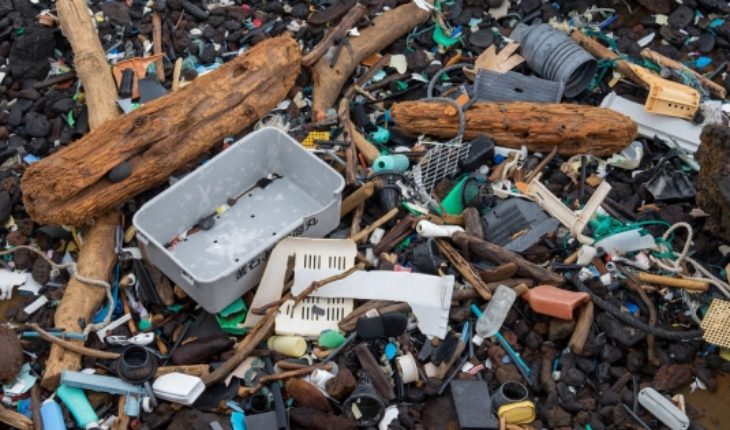did not arise with beverage bottles, or plastic bags or as containers. Originating in Latin America cultures already used polymer materials, such as rubber latex to make human figures, bands for tying axes heads and balls of material, among other uses.
Recently in the mid-19th century trade in precious material took force, often at the expense of indigenous peoples and rural communities, when Brazilian ports were opened to international navigation. Almost parallel to the development of vulcanization, the hand of the American Charles Goodyear, which managed to stiffen and increase resistance to the cold of the rubber. A few years later, we manufacture bakelite, the first completely synthetic plastic substance. Henceforth we know history.
Plastic we call him a series of materials that, created based on organic and mainly synthetic compounds, they have in common the property be malleable. Easy to mold, cheap, waterproof, electrical, acoustic and thermal insulation. Properties that gave it a privileged position in the market just made mass production.
But now, more than one century of industrialization, which at first seemed – and was – a revolutionary invention, puts us at a crossroads. Good-bye from the former miracle or prepare for a crisis environmental record production and pollution one of the faculties that make plastic so convenient is precisely that generates more problems today: its durability. Plastic bags, usually made of low-density polyethylene, it takes more than one century to degrade completely. Case worse are the plastic bottles, produced based on polyethylene terephthalate – or PET-: between 450 and 1,000 years takes to break down it to the micro-organism that are found in nature.
They are the most present in the oceans, because of its tremendous production and consumption of the latter. The year 2016 were sold about 480 billion beverage bottles: this is about a million per minute. But to be fair, the bottles are not the only present in marine pollution: networks of fishing, covered with plastic, cups, caps, fast food containers, balloons, bags and cigarette butts.
If it is plastic, probably terminate in the sea: only 9% of the world production of plastic was recycled in the year 2015, according to a report from Science magazine. Another 12% was incinerated, while 79% accumulated in landfills or expelled to natural environments.
And then there’s how much plastic in the ocean? While the calculations may vary depending on the study, estimated that they there are about 250 billion tons of plastic in the seas of the planet. About 8 million tonnes going into the sea each year: the weight of 800 Eiffel Towers. By 2050 it is estimated that in terms of weight, there will be more particles and waste plastic fish on the planet.
We can lower it to everyday terms: every second about 200 kilos of plastic running into the sea. Only 15% is left on the surface, with about 70% going towards the seabed.
Effects even though the data are overwhelming alone, is not enough to have numbers in hand to understand its impact. In the ocean turns around the world (the central area of the seas) there is more plastic than plankton suspended. They are called “large spots of garbage”. The vast majority are microplasticos scattered on huge surfaces (the stain of the Pacific is greater than us) so it is impossible to see at first glance and much less clean.
These fragments are also large masses of land. Studies say that all of the beaches of the planet have plastic and microplasticos fragments. Places such as Kamilo Beach in Hawaii, are sadly famous by the accumulation of plastic waste that, at some point, were at sea.
The fauna marina is also affected: about 1 million seabirds and 100,000 marine mammals die each year because of plastic waste. The food chain is also interfered by the presence of these polymers, to birds and fish to confuse the microplasticos (plastic fibers almost imperceptible to the human eye) with food.
One of the recently discovered effects is the contribution that generate waste plastics to the greenhouse effect. When exposed to sunlight, most common plastics – as the polyethylene – free methane and ethylene, two powerful gases in generating greenhouse effect.





